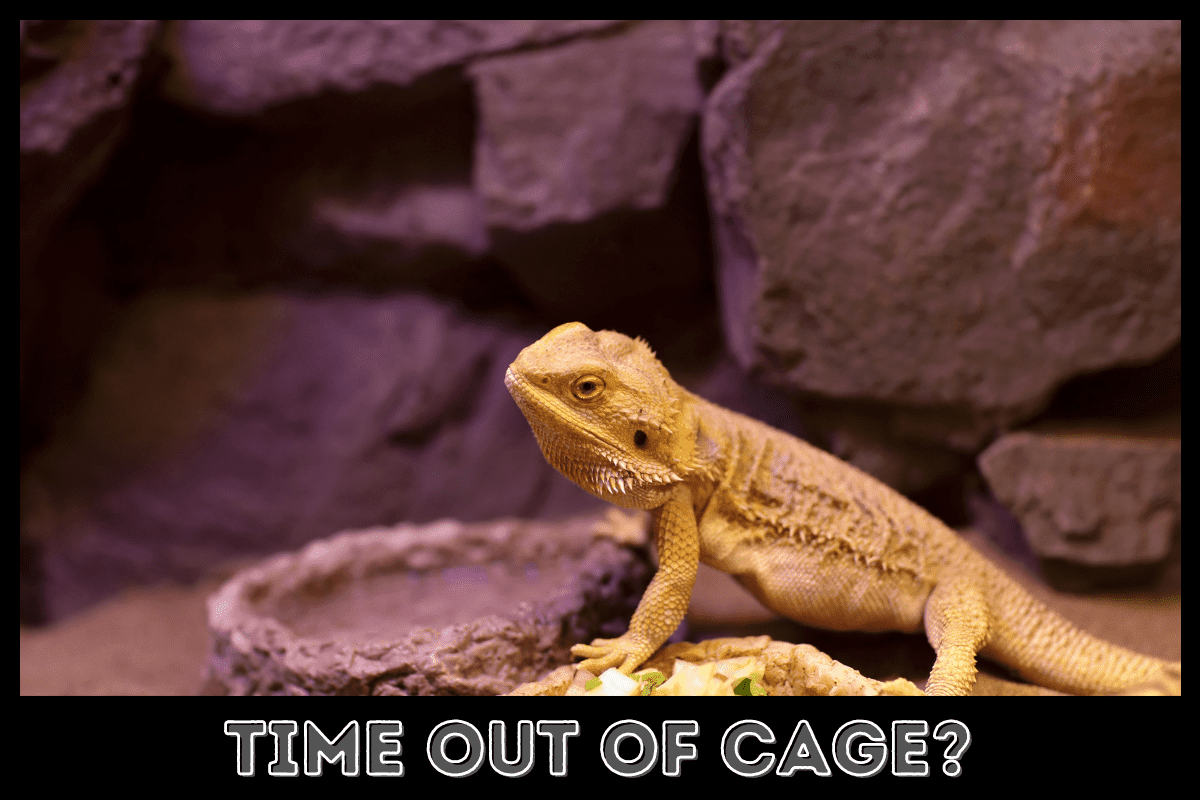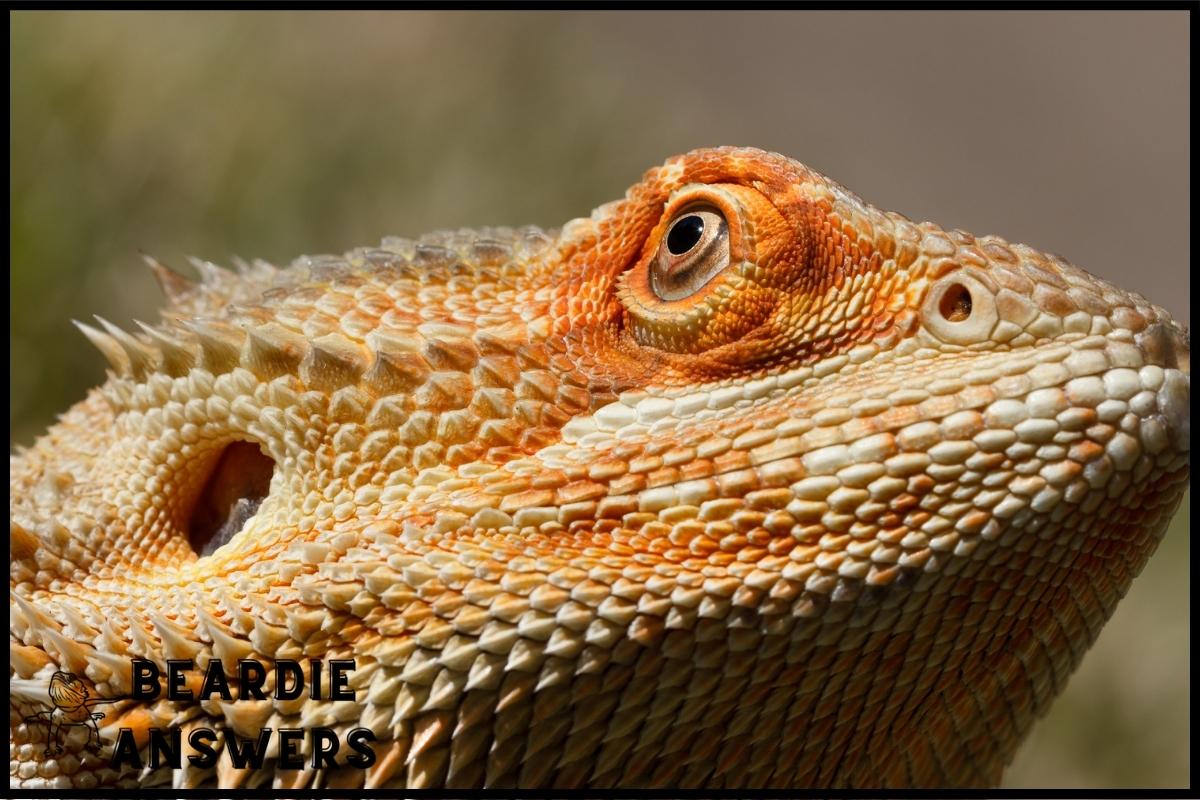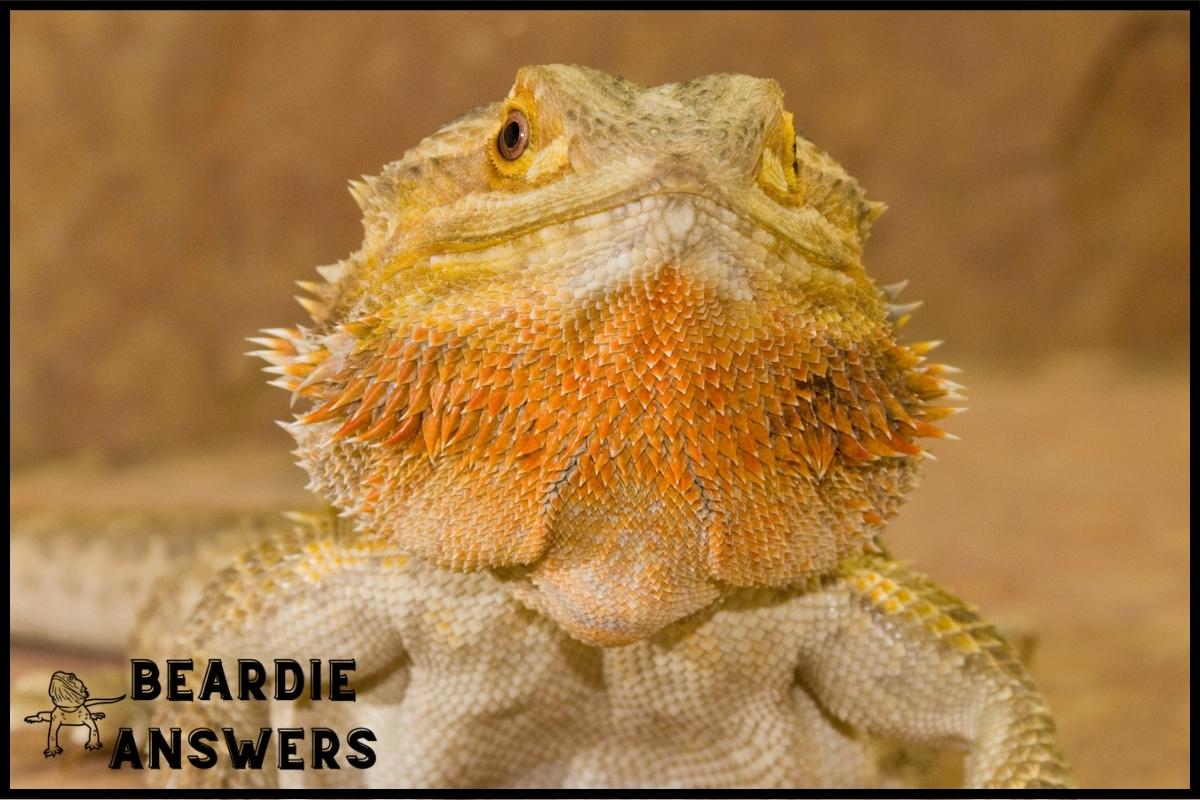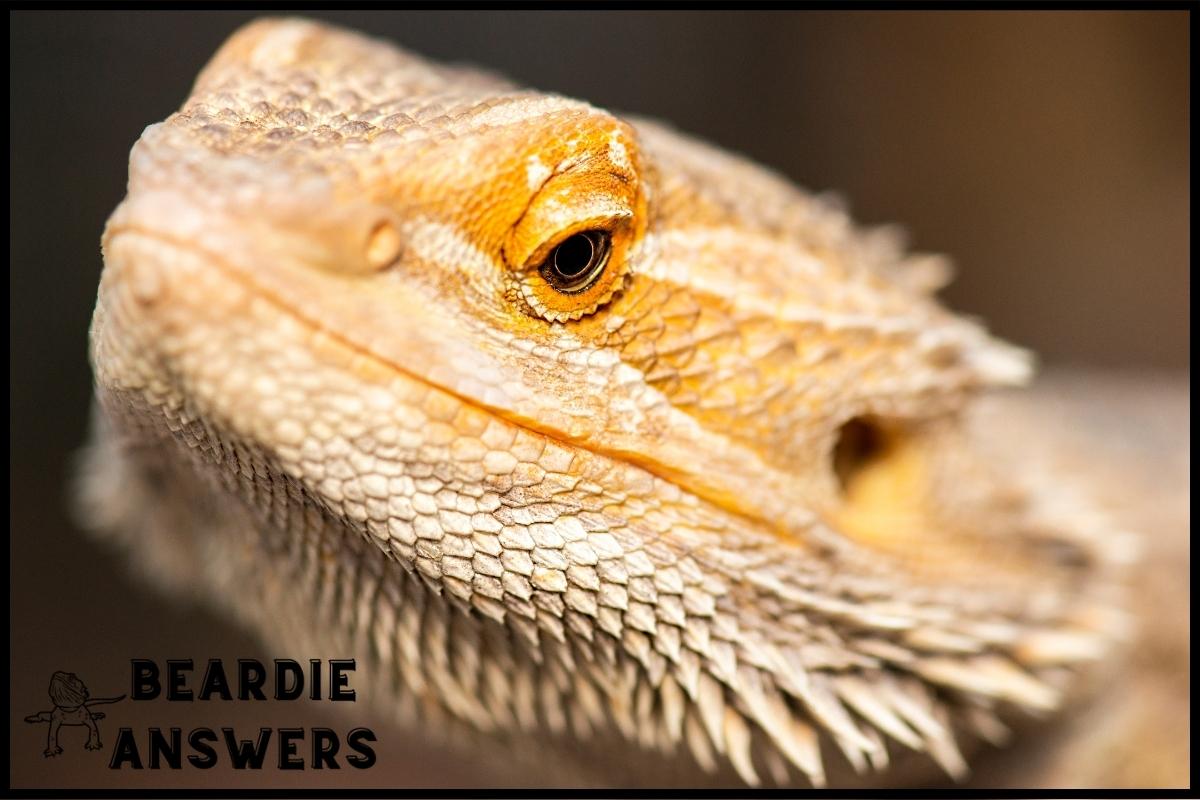When it comes to deciding how long bearded dragons should be out of their cage, there are a few things to consider. Adult bearded dragons, or those that are seven months old or more, can be let out of their cage for up to two hours on a regular basis. However, baby and juvenile bearded dragons should be limited to shorter periods of time outside of their cage in order to ensure they remain comfortable and safe.
It is important to monitor the temperature and humidity in the room, as well as make sure they are receiving enough UVB exposure during their time outside. It is also important to pay close attention to the health and behavior of your bearded dragon while they are outside of their cage in order to ensure they remain stress-free and safe.
What You'll Learn
Recommended Time Out of Cage
For Adult Bearded Dragons
For adult bearded dragons, the recommended time out of the cage is up to two hours on a regular basis. Adult dragons are generally gentle and easy to hold, however, the degree of wanting to be out of the cage depends on each individual and their personality. While short excursions outside of their cage are fine, it is always important to return them before they become stressed.
For Baby and Juvenile Bearded Dragons
For baby and juvenile bearded dragons, it’s best to limit their time outside of the cage to 10-minute increments. If your bearded dragon is still young and immature, take extra precaution while they are out of the cage and to make sure they are not exposed to any risks or hazards. Young bearded dragons should never be left alone and should always be supervised.
Factors That Affect Time Out of Cage
When considering the amount of time a bearded dragon can safely spend out of its cage, there are a number of factors you’ll want to take into account. The temperature and humidity in the room, the lighting and UVB exposure, and the health and behavior of the bearded dragon all play a role in determining how much time is appropriate. Be sure to monitor these factors to keep your pet safe and healthy when it’s out of its cage.
Temperature and Humidity in the Room
Temperature and humidity in the room are two important factors when deciding how long your bearded dragon can be out of their cage. The relative humidity level in a bearded dragon’s enclosure should remain between 30-40%. Humidity levels that are outside that range can cause respiratory infections, which can be deadly for your bearded dragon.
The temperature should not be below 22°C (71°F) and basking temperature should not be lower than 32°C (90°F). To check these levels, you can use a hygrometer to measure the humidity and thermometer to measure the temperature.
You obviously won’t be able to keep your house at this humidity and temperature, but the point is that bearded dragons require much different temperatures than we do. If your house is too cold, a bearded dragon can be in danger when you take them out.
Lighting and UVB Exposure
When it comes to lighting and UVB exposure, it is important to note that bearded dragons should only go one or two days at the most without UVB light. This is because it is essential for producing vitamin D, which allows them to metabolize calcium and is necessary for good health.
You can let your beardies out of their cages for a few minutes up to a few hours but this will depend on their age, personality, and their overall health. Bearded dragons do not need a source of UVA or UVB at night, so this may be the perfect time to take them out of their cage.
Health and Behavior of the Bearded Dragon
Health and behavior of the Bearded Dragon should also be taken into consideration when deciding how long he should be out of his cage. Yawning can be a normal behavior during certain times of the year, but it can also be a sign of a serious health condition. If your bearded dragon is yawning more frequently than usual, it is important to take him to the vet to rule out any health issues.
If your dragon is exhibiting any signs of stress during handling, it is best to return him to his cage and wait for another day when he is more relaxed to handle him again.
Risks and Hazards to Be Aware Of
The biggest risk is that your bearded dragon can escape if they are not closely monitored. It is also important to make sure that your bearded dragon does not ingest any harmful items while out of the cage. Be sure to secure all cords, wires, and other dangers that could harm your pet.
They Can Escape
One of the most important risks to be aware of when letting any pet out of their enclosure is the risk of escape. Bearded dragons are skilled climbers and can easily scale walls, furniture, curtains and more.
They can also squeeze through tight spaces, so it’s important to make sure that any area you let them explore is completely secure. If you have an outdoor enclosure, make sure it’s well-secured with locks and latches to keep your bearded dragon safe.
If you’re letting your bearded dragon explore indoors, check for any potential escape routes and close them off before letting them roam.
Stress
Bearded dragons can easily get stressed, this is especially true when they are not in the usual habitat (their tank). Be aware of any loud noises, vibrations, or changes in the environment that could cause your pet to become stressed.
If you do notice signs of stress, it is best to return them to the safety and comfort of their enclosure right away. Make sure their enclosure has plenty of places to hide and explore. Providing a stimulating and enriching environment will help reduce stress levels and promote a healthy lifestyle.
Ingestion of a Harmful Item
It is also important to be aware of any potential items that your beardie might ingest while out of its cage. Metal can be a choking hazard, and if ingested, can cause a variety of problems such as internal blockages, gastrointestinal irritation, and even poisoning. Fireflies can also be poisonous to bearded dragons, so it’s important to make sure the area your beardie is exploring is free from these insects. Be sure to inspect the area for any small objects that your reptile may try to swallow.
Safety Tips to Follow
Always Supervise
When handling or taking your bearded dragons out of the cage, make sure that you are supervising them at all times. Keep all doors and windows closed as they can easily escape, and be aware of any other pets or animals that may pose a threat.
Make sure that your bearded dragon is kept away from direct sunlight, as too much exposure can be harmful. Return your bearded dragon to their cage before they become stressed out.
Secure All Cords, Wires, and Other Dangers
It is important to secure all cords, wires, and other potential hazards when you let your bearded dragon out of its cage. Your beardie could easily get tangled in wires or cords or even bite them, causing harm. They may also find other items that can be hazardous to their health, such as small pieces of plastic or rubber. Always check the area your beardie will be exploring to make sure it is safe and secure.
Bullet Point Summary of the Article
- The amount of time a bearded dragon spends outside of their cage will depend on their age, size, personality, and environment.
- Adult bearded dragons can spend a few hours outside of their cage, while baby and juvenile bearded dragons should have less time out.
- The temperature and humidity in the room should be monitored closely, as well as the lighting and UVB exposure.
- Always supervise your bearded dragon when they are outside of their cage and secure all cords, wires, and other dangers.

Hi! My name is Bryan, I am the “one behind the words” here are BeardieAnswers.com. I believe that providing quality care and nutrition is the best way to ensure the health of your pet. Every beardie is special and deserves the best care and attention. If you have questions about your bearded dragon, please don’t hesitate to ask! View My Full Author Page




